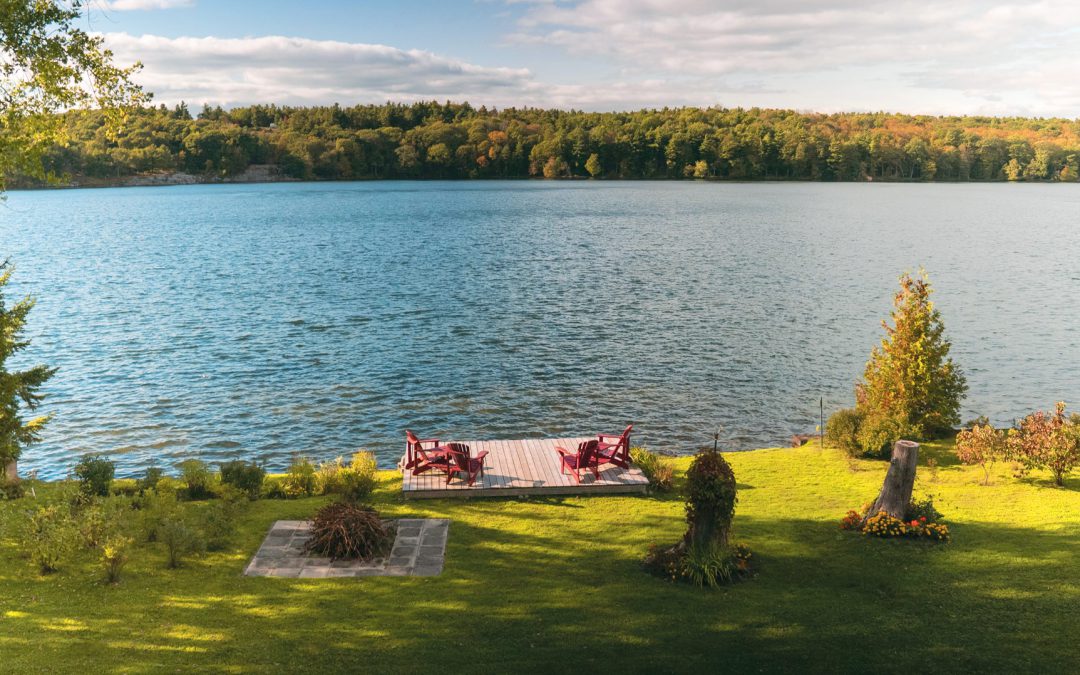One of the functions of lake groups is to implement programs that will rally shoreline property owners to help protect lake health and biodiversity.
If you are looking for ways to engage property owners on your lake, there are many programs and activities that you can choose from. Below is a list to get you started!
- We know the importance of healthy shoreline buffers. Organize a day with local native plant suppliers where shoreline property owners can purchase plants. Perhaps there could be an incentive, 10 per cent off for example.
- Connect with NatureWatch – a host of citizen science programs that will be sure to inspire! Your shoreline property owners can participate in:
- FrogWatch – track changes in frog and toad populations
- MilkweedWatch – help researchers identify the location of milkweed plants to track the health of Monarch Butterflies
- PlantWatch – help determine ecological changes that may be occurring by recording the flowering times of certain plant species
- WormWatch – help scientists study the species of earthworms that are in Canada
- IceWatch – scientists need help in acquiring data on the freeze-thaw cycles of our lakes
- SnowTweets – Help snow and ice researchers at the University of Waterloo by tweeting the depths of snow in your area
- Birds Canada offers many citizen science programs that contributes to conservation action! Be sure to check out:
- Breeding Bird Survey – this provides long term bird population trends informing scientists and wildlife managers. This program involves a little bit of skill as you have to be able to identify birds by both sight and sound. Observers survey a pre-determined route one day per year between May 28 and July 7.
- Canadian Lakes Loon Survey – this involves monitoring loon chick hatch and survival to track Common Loon breeding.
- Christmas Bird Count – this is conducted on one day between December 14 and January 5. The results are used by biologists and naturalists to determine bird population trends.
- Christmas Bird Count for Kids – inspired by the Christmas Bird Count but this one is geared towards kids!
- Great Backyard Bird Count – regardless of whether you are an expert or just beginning to identify birds, this citizen science program is for you! It is a four-day event where people watch, count, learn and celebrate birds.
- Project NestWatch – submit your nest observations to contribute to important research and conservation efforts.
- Help the Canadian Wildlife Federation monitor bat houses and roosting sites. By uploading your observations you’ll help bat researchers gather important information to help track the state of Canada’s bats and help determine the best bat house design.
- Check out the Government of Canada citizen science portal. Here you’ll find information on programs like:
- eButterfly – contribute to science by tracking your butterfly sightings and locations.
- Mission Monarch – help conserve Monarch Butterflies by sharing your observations of Monarchs and milkweeds.
- Water Rangers – affordable test kits with an open-data platform that allow you to collect and share water quality data.
- Check with your Ministry of Environment to see if they have water quality and water clarity sampling and monitoring programs.
- It’s important to properly clean boats to help prevent the spread of aquatic invasive species. Arrange a boat washing demonstration by your invasive species council or provincial government.
- Organize spring and fall shoreline clean-ups.
- If there are invasive species in your area, have someone come in from your invasive species council or provincial government to present on how to identify them, their impacts and how to properly dispose of them.
- An improperly functioning septic system can lead to an overabundance of weeds and algal blooms. It can affect water quality and habitats for wildlife, not to mention health risks. Have someone come in and present on the importance of having a well-maintained septic system or holding tank.
- Encourage property owners to track the biodiversity found in the area by utilizing the free iNaturalist app. Download it at iNaturalist.ca and create a project. Host a day to encourage local owners to use the app and record all the plant and animal species they can find. It’s a great way to take a living snapshot of the wildlife found along the shores and properties. You can host an annual day each year to see what new species are attracted to the area. It’s always a great way to monitor the success of Love Your Lake initiatives implemented along your shoreline.

